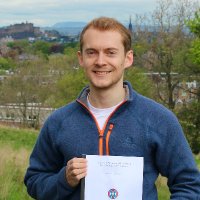
Stefano Carniani
@stefanocarniani
ID: 1542143654839701504
29-06-2022 13:51:39
117 Tweet
154 Followers
40 Following


What are #AtLAST science drivers? How is observing time going to be allocated? Where is it going to be built? How do you implement sustainable operations? Find some answers here 👇🏼 EU Science & Innovation 🇪🇺 Horizon Europe 🇪🇺 MN Faculty: Research

Very happy to have contributed to this article in Nature Astronomy about my Bagpipes software, and thanks very much to Paul Woods, I think access code is a great idea! nature.com/articles/s4155…




Jan Scholtz, Logic Wizard Stefano Carniani Dark mode for this paper 🌙 synthical.com/abs/2409.20533…

Long Read Friday? Go for this extensive review, written by Sandro Tacchella for The Conversation, of the latest groundbreaking insights provided by #JWST and how these have changed our understanding of cosmology and galaxy formation.🌌🔭 theconversation.com/the-earliest-g…


KICC researcher Dr Sandro Tacchella writes about recent JWST work The Conversation theconversation.com/the-earliest-g…









